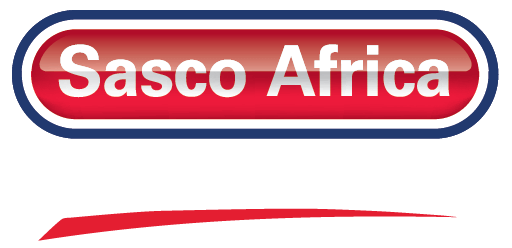
Rail transportation plays a vital role in many industries, mainly due to its ability to move large volumes of goods reliably and cost-effectively. Given the heavy loads that rail vehicles carry, it is important to maintain precise weight control and measurement. This is where a specialized scale for trains becomes essential. By measuring the mass of railcars accurately before, during, or after loading, businesses can streamline their logistical procedures, reduce risk, and boost efficiency.
However, the idea of weighing trains using dedicated equipment may seem complex at first. In reality, the practical steps involved rely on robust technology designed to handle high capacity loads. A track scale ensures that each railcar is weighed properly, helping operators maintain compliance with safety standards and minimize potential overloading issues. For companies like Sasco Africa, which provides weighing systems solutions and scales, the technology is a testament to how far modern engineering has come in developing dependable, on-track weight monitoring tools that benefit users across multiple sectors.
Understanding the Role of Rail Weighing Systems
Rail weighing systems are essential for ensuring that the load capacities of trains are not exceeded. Overloading can cause damage to rail infrastructure, increase the likelihood of derailments, and create operational disruptions. With a properly configured solution, each railcar passing over the tracks is monitored to obtain precise weight data. This process not only prevents safety hazards but also enables businesses to optimize their freight planning. For instance, if operators know exactly how much weight each wagon can carry, it becomes easier to send the right amount of goods without fear of breaching legal or structural limits.
In industries like manufacturing, mining, and agriculture, the distribution of products along the length of a train can be carefully managed once the data from track-based scales is obtained. Having dependable readings means that raw materials or finished products can be allocated more efficiently. When different types of commodities are being transported, the ability to know exactly how much each wagon holds reduces any risk of imbalance, which can lead to uneven wear and tear on train axles and rails. This in turn prolongs the lifespan of both the rolling stock and the track infrastructure, translating into considerable cost savings over time.
Aside from safety and maintenance advantages, rail weighing systems also contribute to reliable billing and record-keeping. Since many clients pay for freight transport on a per-ton basis, having exact weight figures is key to fair transactions. When all parties involved can rely on the same set of data, disagreements become less likely, and operational flow is enhanced. Real-time data collection allows cargo handlers to monitor loading patterns, identify inefficiencies, and pinpoint any potential mechanical issues before they escalate. Ultimately, rail operators who integrate track scales into their processes can expect improved performance, better resource management, and safer day-to-day activities.
Key Components and Operation Methods
A typical heavy-duty track scale arrangement consists of specialized load cells, which are the heart of the system. These load cells are installed beneath or within the railroad tracks, converting the force exerted by the weight of a train into electrical signals. The signals are then transferred to an instrument that processes the data to display clear weight readouts. Some designs include multiple sensors placed in sequence along the track, ensuring that each wheel or axle is measured independently and with precision.
In addition to load cells, other critical components include rugged foundations and steel frames that support the track. Since excessive vibration and environmental conditions can affect the accuracy of measurements, proper alignment and calibration are essential. Many systems employ built-in diagnostic tools and automated calibration checks to maintain reliability. With modern technological advancements, operators can access the recorded data remotely through user-friendly software interfaces, which helps streamline operations. The software not only logs each reading but can also generate comprehensive reports, allowing for analyses of patterns and trends.
The actual operation of these track scales can vary according to the specific system design. Some require trains to come to a full stop on the designated weighing section, while others operate in-motion, capturing weight data as trains pass by at reduced speed. The choice largely depends on the throughput requirements of the facility, as well as the level of accuracy needed. For high-volume operations, in-motion systems provide continuous reading without halting the flow of traffic. For smaller sites or those that demand extremely high precision, static systems may be preferred due to their ability to deliver more exact measurements when the train is stationary.
Real-World Benefits and Considerations
In actual practice, these specialized track scales deliver benefits that extend beyond simple weight measurements. For one, the immediate detection of overweight railcars helps keep both staff and infrastructure safe. Properly balancing loads curtails unnecessary strain on brakes and couplings, which lowers the risk of mechanical failures that can lead to accidents. Furthermore, when a facility knows exactly how much product is traveling along each train route, it becomes easier to schedule maintenance, allocate resources, and predict total operating costs. This level of foresight ensures a more reliable supply chain, ultimately satisfying customers who expect punctual deliveries.
From a regulatory perspective, using accurate rail weighing systems demonstrates compliance with legal load limits. Fines and penalties can be significant when overweight railcars are discovered at inspection checkpoints. By investing in strong measurement methods, companies protect their reputation and avoid disruptions that can arise from non-compliance. In addition to meeting government standards, the data collected also serves as an integral tool for performance evaluation. By reviewing the historical weight logs, management teams identify trends, determine areas needing improvement, and regularly calibrate targets to ensure consistent operational quality.
It is also worth noting that careful planning should go into the infrastructure around these systems. Sufficient spacing, foundation support, and environment-appropriate materials are all factors that can influence the total cost and success of a weighing plan. For example, harsh climates with extremes in temperature and humidity could require specialized enclosures or protective designs. By weighing these considerations early in the development phase, enterprises can guarantee that their track scale systems function smoothly for many years to come, delivering reliable data and retaining their investment value.
Conclusion
Accurate rail weighing solutions are indispensable for ensuring that goods move safely and efficiently across vast distances. By integrating appropriate monitoring technology, companies enjoy the benefits of optimized loading, longer equipment lifespan, and minimal operational disruptions. Moreover, having accessible data on railcar weights takes the guesswork out of freight planning, allowing teams to focus on other critical aspects of their logistics operations.
If you would like to discover how these comprehensive systems can complement your industrial processes, Sasco Africa welcomes you to browse our array of weighing systems solutions and scales. From track scales designed for high-capacity operations to rugged industrial floor scales, our offerings are built around durability, accuracy, and user ease.


